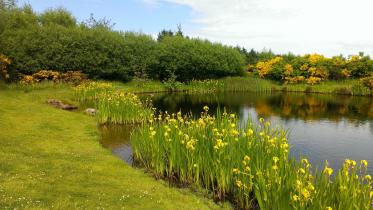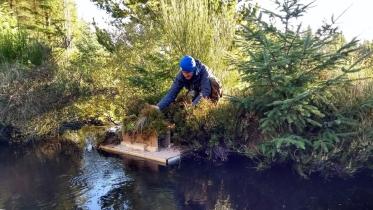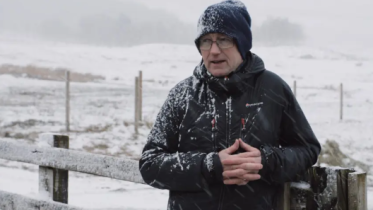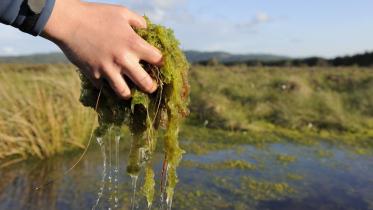Green Infrastructure Project Update - The Green Action Trust's 10,000 Raingardens
The Green Action Trust’s 10,000 Raingardens for Scotland project used small scale green infrastructure interventions delivering surface water management solutions to improve resilience and enhance greenspaces for Queensland Gardens in Glasgow. We spoke with Rachel Howlett, Green Action Trust’s Raingardens Development Officer, to find out more about their ambitious project.
How did you engage with the local community?
Key perhaps were a series of community picnics organised by the project, participation at events run by Southside Housing Association, and manning a stand in the foyer of each tower block regularly. Through this mixed approach relationships were built up quickly and effectively with large numbers of the residents.
We created what proved an eye-catching, and fun, public-focussed brand alongside a suite of promotional materials aimed at a range of audiences including general public, homeowners, communities, schools, developers and planners. We used information leaflets, online resources, activity packs and marketing give-aways. This was supplemented by display materials, and the creation of some demonstration raingardens for use at events and in schools. The approach has also been very popular at events attended, particularly partner events such as RSPB’s Garden Wildlife Festival and The Back Gardens spring festival.
Has your success locally encouraged your efforts beyond Queensland Gardens?
Yes. Both the general public and resident engagement have led to the production a wider range of materials than originally anticipated, including outline sessions for primary schools linked to the Eco-School Curriculum, a make-your-own green roof shed, and talks and presentations for professional audiences such as planners, architects and developers.
The engagement has been so successful, that the project officer was repeatedly approached by organisations and communities out with the pilot area to support them with advice, to give talks and presentations, and to attend events. This clearly demonstrates that there is interest in finding out more about these kind of interventions from individual homeowners, communities, and organisations involved in property and water management. The officer was also invited to comment on several flood risk management plans and proposals across Glasgow.
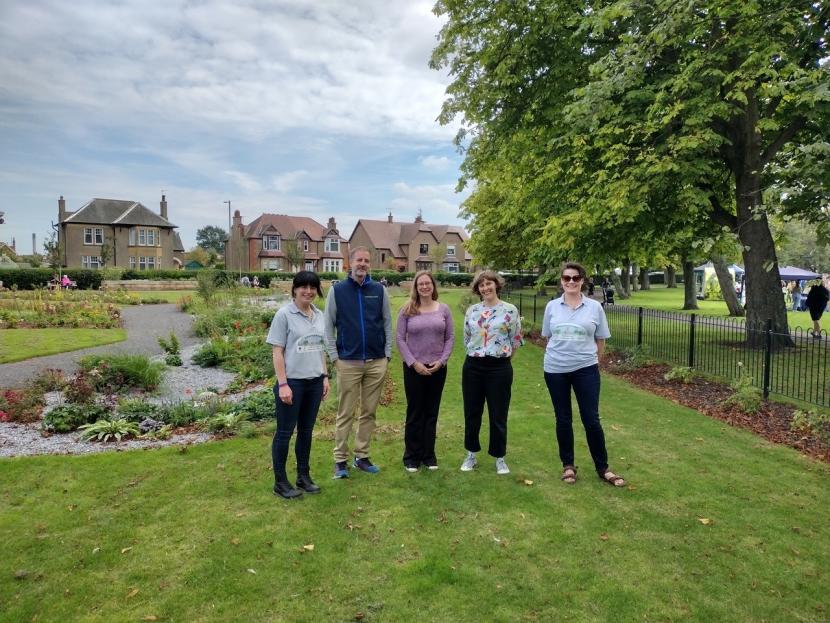
What are the big differences you have been able to make to the site?
We have contributed to improving access to better greenspace for the residents of Queensland Gardens by creating small scale green infrastructure improvements and supporting the creation of a wider landscape masterplan for the whole estate. This will provide a resource to the residents and allow them to spend more time in a greener environment. This is all about improving the actual greenspace, as access to the site was already very good, the space was just uninviting and unappealing. At the start of the of the project there was extensive hard standing and paving slabs running across the site, with only one patch of regularly mown grass and a limited planting. Now, there are plans for multi-functional greenspace across the whole site, and 2 sudsplanters already installed.
Raingardens bring greater resilience, how has this been achieved at Queensland Gardens?
We have delivered improved resilience in a number of ways during this project. From installing 2 sudsplanters on the porches for the tower blocks to manage run off, to the creation of raingarden feature designs which manage the water run-off from the rest of the tower blocks. We’ve also been contributing ideas and suggestions of nature based climate solutions to the wider masterplan.
One really pleasing outcome is that the understanding of the community on natural flood management techniques has improved, as demonstrated by the questionnaire results and the engagement in the community events. There will be a range of green infrastructure interventions focussed on surface water management at source following the completion of the Green Infrastructure Fund project supported by the Community Engagement Fund work.
What has been local reaction to the project?
This project has started the process of improving the perceptions of the greenspace around Queensland Gardens. Aspirations and concerns of residents were incorporated into designs that have been through several consultation rounds at the community events we attended and hosted.
Feedback has been increasingly positive from all sectors of the residents spoken to, including the changing of some minds. For example, a group of elderly residents who attend classes and meet informally in the community “flat” were initially concerned over benches and seating being incorporated, as they saw this as a way to increase anti-social behaviour and would give somewhere for the kids to hang out and be a nuisance to the rest of the residents.
They have largely changed their minds now, and are pleased to see opportunities for them to sit and enjoy the new “gardens”, whilst providing alternative areas for young people to play and gather.
How important was it that you had good partners in this work?
We were fortunate that Southside Housing Association (SHA) had already undertaken some level of community engagement at the site, and had a dedicated member of staff working with the residents. We were also able to capitalise on summer activities provided by SHA for the local children. This enabled us to engage with parts of the community that might have been more difficult to access. We undertook a range of different activities from activity sessions to drop in sessions at the community foyers, as well as sessions with the local primary school. This seemed to be successful in reaching a wide range of members of the community.
Sustainability lay at the heart of your work, can you tell us a little about that ?
A requirement for sustainably sourced, local material to be used was written into the contract for the design of the community raingardens at Queensland Gardens. During the development of the media and publicity campaign using sustainably sourced materials was part of the assessment criteria for the successful candidates. This was carried through to event where locally sourced catering and recyclable materials were used.
